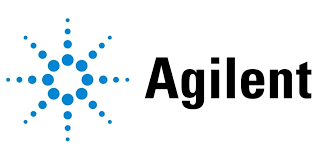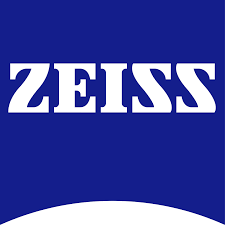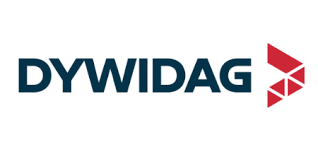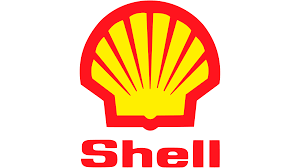Human Insulin Market Report
Published Date: 02 June 2025 | Report Code: human-insulin
Human Insulin Market Size, Share, Industry Trends and Forecast to 2033
This report offers a comprehensive analysis of the Human Insulin market, covering industry insights, market trends, and forecasts for the period from 2023 to 2033, focusing on market size, growth, and regional performance.
| Metric | Value |
|---|---|
| Study Period | 2023 - 2033 |
| 2023 Market Size | $9.50 Billion |
| CAGR (2023-2033) | 6.2% |
| 2033 Market Size | $17.60 Billion |
| Top Companies | Sanofi, Novo Nordisk, Eli Lilly, Boehringer Ingelheim, Bristol Myers Squibb |
| Last Modified Date | 02 June 2025 |
Human Insulin Market Report (2023 - 2033)
Human Insulin Market Overview
Customize Human Insulin Market Report market research report
- ✔ Get in-depth analysis of Human Insulin market size, growth, and forecasts.
- ✔ Understand Human Insulin's regional dynamics and industry-specific trends.
- ✔ Identify potential applications, end-user demand, and growth segments in Human Insulin
What is the Market Size & CAGR of Human Insulin market in 2023?
Human Insulin Industry Analysis
Human Insulin Market Segmentation and Scope
Tell us your focus area and get a customized research report.
Human Insulin Market Analysis Report by Region
Europe Human Insulin Market Report:
In Europe, the market is set to increase from $2.73 billion in 2023 to $5.06 billion by 2033. The growing aging population, along with enhanced awareness regarding diabetes management, acts as a catalyst for this growth, alongside advancements in technology and treatment practices.Asia Pacific Human Insulin Market Report:
In the Asia Pacific region, the Human Insulin market is projected to grow from $1.95 billion in 2023 to $3.61 billion by 2033. Factors such as increasing urbanization, lifestyle changes, and rising disposable incomes are driving a higher incidence of diabetes, thereby boosting the demand for insulin products.North America Human Insulin Market Report:
North America holds a significant portion of the Human Insulin market, projected to grow from $3.39 billion in 2023 to $6.29 billion by 2033. The high prevalence of diabetes and ongoing innovations in insulin formulations contribute to robust market growth, along with favorable reimbursement policies and healthcare infrastructure.South America Human Insulin Market Report:
The South American market for Human Insulin is estimated to expand from $0.62 billion in 2023 to $1.15 billion in 2033. The growth is supported by increasing healthcare initiatives and a focus on expanding diabetes management programs across the region.Middle East & Africa Human Insulin Market Report:
The Middle East and Africa Human Insulin market is anticipated to grow from $0.81 billion in 2023 to $1.50 billion by 2033. Initiatives from governments and NGOs aimed at improving diabetes care access and treatment modalities will drive the expansion in this region.Tell us your focus area and get a customized research report.
Human Insulin Market Analysis By Product
Global Human Insulin Market, By Product Market Analysis (2024 - 2033)
The major product segments in the Human Insulin market include rapid-acting insulin, which holds the largest market share with a revenue projection of $4.48 billion in 2023, expected to reach $8.31 billion by 2033. Short-acting insulin is anticipated to grow from $2.01 billion to $3.73 billion during the same period. Intermediate-acting insulin is projected to grow from $1.09 billion to $2.02 billion, while long-acting insulin's growth trajectory will see it increase from $0.96 billion to $1.77 billion. Premixed insulin is expected to double, from $0.95 billion to $1.77 billion.
Human Insulin Market Analysis By Application
Global Human Insulin Market, By Application Market Analysis (2024 - 2033)
The Human Insulin market can be analyzed through its applications, with type 1 diabetes accounting for a dominant share of $5.54 billion in 2023, forecasted to reach $10.27 billion by 2033. Type 2 diabetes is projected to grow from $2.30 billion to $4.26 billion, while applications for gestational diabetes and other conditions will experience moderate growth.
Human Insulin Market Analysis By Delivery Form
Global Human Insulin Market, By Delivery Form Market Analysis (2024 - 2033)
The delivery forms are a critical segment of the Human Insulin market. Injections dominate this segment, with a value of $6.29 billion in 2023, expected to rise to $11.65 billion by 2033. Inhalation methods, although less common, show promise with growth from $2.27 billion to $4.21 billion, while pump delivery systems are evolving and projected to increase from $0.94 billion to $1.75 billion.
Human Insulin Market Analysis By End User
Global Human Insulin Market, By End-User Market Analysis (2024 - 2033)
End-user segments are crucial in understanding Human Insulin consumption patterns. Hospitals currently dominate this sector, valued at $5.54 billion in 2023 and expected to reach $10.27 billion by 2033. Homecare settings are also significant, growing from $2.30 billion to $4.26 billion, while pharmacies are showing steady growth as well.
Human Insulin Market Analysis By Distribution Channel
Global Human Insulin Market, By Distribution Channel Market Analysis (2024 - 2033)
Distribution channels play a vital role in ensuring insulin accessibility. Retail pharmacies lead the market, valued at $6.29 billion in 2023 and expected to grow to $11.65 billion by 2033. Online retail is also gaining traction, with a rise from $0.94 billion to $1.75 billion, reflecting changing consumer purchasing behaviors.
Human Insulin Market Trends and Future Forecast
Tell us your focus area and get a customized research report.
Global Market Leaders and Top Companies in Human Insulin Industry
Sanofi:
A leading company in the diabetes care sector, Sanofi produces a range of insulin formulations, including Lantus.Novo Nordisk:
Known for its insulin products, including rapid-acting and long-acting insulins, Novo Nordisk is dedicated to innovative diabetes treatment solutions.Eli Lilly:
Eli Lilly focuses on diabetes management with a range of human insulins and biosimilars, contributing significantly to global market dynamics.Boehringer Ingelheim:
Specializes in developing and manufacturing various insulin products, including biosimilars aimed at expanding patient access.Bristol Myers Squibb:
A prominent player with contributions to diabetes and patient care, focusing on innovative delivery methods for insulin.We're grateful to work with incredible clients.









FAQs
What is the market size of human Insulin?
The global human insulin market is valued at approximately $9.5 billion in 2023, with expectations to reach significant growth by 2033. This market is anticipated to grow at a CAGR of 6.2%, driven by rising diabetes prevalence worldwide.
What are the key market players or companies in this human Insulin industry?
Leading companies in the human insulin industry include Novo Nordisk, Sanofi, Eli Lilly, and AstraZeneca. These players dominate the market due to their extensive product portfolios, research innovations, and strategic collaborations.
What are the primary factors driving the growth in the human insulin industry?
Primary factors driving growth in the human insulin market include increasing diabetes prevalence, advancements in technology, and greater healthcare accessibility. Additionally, increasing awareness of diabetes management and a growing geriatric population contribute to market expansion.
Which region is the fastest Growing in the human insulin market?
The Asia Pacific region is projected to be the fastest-growing market for human insulin. With a market size expected to grow from $1.95 billion in 2023 to $3.61 billion by 2033, the region benefits from rising diabetic cases and improved healthcare infrastructure.
Does ConsaInsights provide customized market report data for the human insulin industry?
Yes, ConsaInsights offers customized market reports tailored to specific needs within the human insulin industry. These reports cover bespoke analysis, tailored data segments, and specific regional insights based on client requirements.
What deliverables can I expect from this human insulin market research project?
Deliverables from a human insulin market research project typically include comprehensive reports, in-depth analysis of market trends, competitive landscape assessments, segment-wise data, and customized recommendations tailored to your business needs.
What are the market trends of human insulin?
Current market trends for human insulin include the growing preference for rapid-acting insulins, increasing adoption of innovative delivery methods, and a shift towards biosimilar insulin products. These trends are driven by the need for effective diabetes management solutions.
